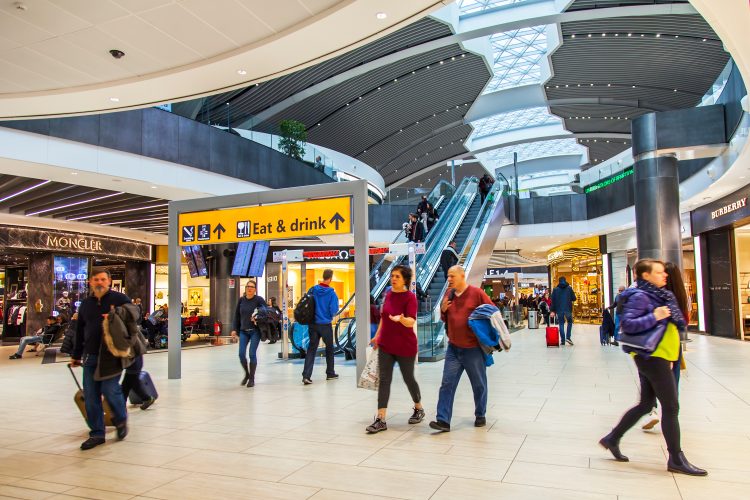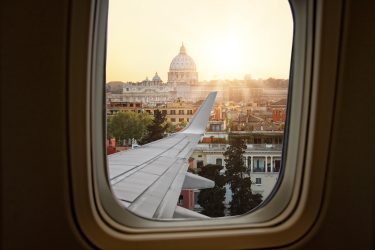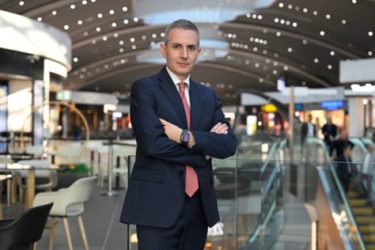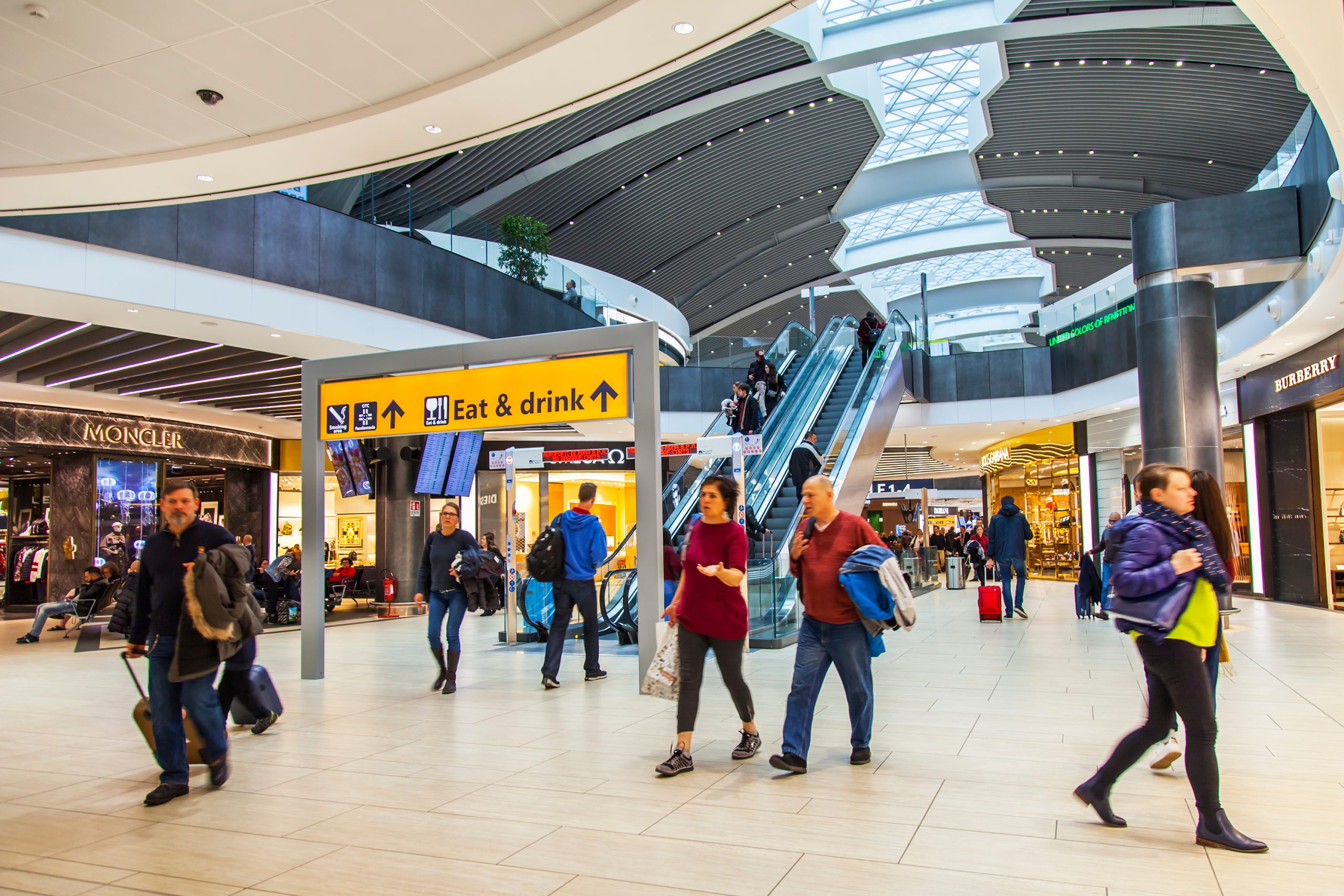Chunekshi Wimalasuriya, Editorial Assistant of International Airport Review, met with Federico Scriboni, Director of Aviation Business Development at Routes Europe 2024 of Aeroporti di Roma SpA. In this exclusive Q&A, Federico explains Aeroporti di Roma’s business plans to be attractive to airlines and secure the company’s financial viability.


Photo credit: Fiumicino Airport
Could you introduce yourself and your role at Aeroporti di Roma and give an insight into your background and aviation history?
As Director, I am responsible for the development of Aeroporti di Roma’s airline business. I take care of the overall development of airline activities at our airports. In Rome, we manage both airports, Leonardo da Vinci–Rome Fiumicino Airport (FCO), which is our intercontinental hub, and Rome Ciampino International Airport “GB Pastine” (CIA), which is our second airport in the city.
How is business going at the two airports and how was the last year?
We ended 2023 with 44.4 million passengers. This figure is split between FCO and CIA, where we had 40.5 million passengers at FCO, while CIA received 3.9 million passengers.
Speaking of Fiumicino Airport, the airport closed the year with an overall traffic recovery of 93% and this result is due to a combination of elements. We started the year with a small recovery due to some ongoing restrictions. But from October 2023 we exceeded 2019 levels, so in October we had a 1% increase in traffic compared to October 2019. This continued in November with a 4% increase in traffic and in December with a 6% increase.
Now, in early 2024, things are getting better. In the first three months of 2024, we saw an 8% increase in traffic. April performed well, seeing a 10% increase in traffic compared to April 2019.
This is important to mention as we look at the summer 2024 programme and are aware that Rome Fiumicino will have the highest capacity growth among the top ten airports in Europe by passenger traffic.
What do you think is your business model that will contribute to the growth of these two airports in 2024? And how do you work with airlines to develop a business model that supports the growth of all stakeholders involved?
We have a dedicated team specifically dedicated to developing air traffic and the route network that directly serves the airport. In general, our offer consists of a combination of successful elements.
First of all, we offer airlines access to one of the largest and most attractive markets in the world: Rome. At the same time, we offer probably the highest level of quality that an airport in Europe can offer. At the beginning of 2023, we were rated five stars by Skytrax. After Munich, we are the second airport in Europe to receive this rating. I would also like to mention another award given by the Airport Council International (ACI World), which named Fiumicino the best airport in Europe for the seventh year in a row. This is proof that we are very consistent in our quality strategy.
And last but not least, we recently received a new award from Skytrax: we were named the best airport in the world for its safety standards.
To attract and develop airlines, traffic demand, quality but also trade policy are crucial. We can count on a comprehensive and competitive trade policy with incentives to encourage the expansion of our route network.
It helps in the launch of new destinations and new routes. We can also count on marketing and operational support from the airline to carry out joint promotions when a new route opens.
What difficulties and challenges do you think you are currently facing?
If you look at the aviation industry, and the aviation industry in general, I think the biggest challenge is the capacity of the industry and the inability of the industry to handle such a high level of demand.
The biggest challenge is the capacity of the industry and its inability to cope with such high demand.”
There are several examples of this, starting with the problems with the Pratt & Whitney engines, which are actually reducing the number of 320 family aircraft available on the market. I should also mention the problems with the Boeing 737 Max.
The weakness of the entire industrial chain is that it limits the industrial capacity of airline manufacturers to provide the additional capacity demanded by the market.

 What opportunities do you see for this year? Do you think the freight sector will have a strong impact and what is your story on this?
What opportunities do you see for this year? Do you think the freight sector will have a strong impact and what is your story on this?
In terms of passenger traffic, we forecast that traffic will slightly exceed the level of 2019 (a record year for us). In terms of freight traffic, it is the same, I would even say it is better, because freight traffic is growing strongly.
In the first three months of 2024, we are seeing growth of plus 40% compared to the 2019 freight rate and plus 70% compared to the previous year. This is mainly due to a very broad range of long-haul destinations that we are bringing to market.
To give you an example, North America is already booming. In summer 2024, we will have up to 39 departures and arrivals per day during peak periods – 12 of them from North America, including the US, Canada and Mexico. All of these mass flights will carry cargo.
For the first time in continental Europe, flights from New York to Rome were introduced via Fiumicino Airport. What impact does this connection have on the route development strategy and how did this success come about?
In fact, we achieved this record last summer in 2023. Back then, we had up to 11 daily departures and 11 arrivals in New York, including both John F. Kennedy International Airport (JFK) and Newark Liberty International Airport (EWR). For this summer, we are confirming the overall program and adding flights on a Saturday. In total, including Saturday, we will have up to 12 arrivals and 12 departures per day from Rome to New York.
This makes Rome the second airport in continental Europe, after Paris’ Charles de Gaulle Airport, to offer such a frequency of daily flights to New York.
Where do you look for revenue streams when you open new routes? What revenue streams are helpful?
With each new route we generate additional revenue for the airport. The fourth revenue driver is revenue from air traffic.
The revenue comes from airport fees, which include both landing and take-off fees and passenger fees. That is why it is very important not only to get additional flights and landing and take-off fees, but also to help airlines increase the number of passengers on board.
In this case, we get additional revenue from passengers. In addition, when we open a new route, more passengers pass through the airport, eat and shop there, and that is the additional source of income we get. Commercial revenue.
The airport is part of a larger system. When we open a new route, that new route brings new passengers, which adds value to the city; it increases the value of the community in terms of tourist numbers and business developments. This is a great benefit to our local economy and our area.
How does your airport give passengers a sense of locality?
We try to capture the feeling of being in Italy and in Rome at our airports. Airports are sometimes described as “no more” and “not a place”. That is not the case with us. Rome Fiumicino is a place, a very specific place is Rome, is Italy. And when you experience our airport, you can feel that from all possible angles.
About the author


Photo credit: ADR
Federico Scriboni is a senior executive with almost 20 years of experience in the aviation industry. Federico holds a degree in Economics and a Master’s degree in Marketing Management from Sapienza University of Rome. He began his career in the consumer goods sector as a Junior Brand Manager at SAB Miller plc Group and in 2006 moved to the aviation industry where he took on growing responsibilities in commercial and marketing development. After starting out as Revenue Manager, he moved to Alitalia’s Strategic Marketing and Planning Department where he coordinated marketing, sales and network tasks. His professional interest in the international aviation business led him to join Aeroporti di Roma (ADR – Rome Airports Company) in 2010 as Route Development Manager Europe for Rome FCO airport. In recent years Federico has taken on growing responsibilities and in 2016 he took over the management of the entire Airline Traffic Development team for both airports managed by ADR (Rome FCO and Rome CIA). Today he is Aviation Business Development Director and has primary responsibility for expanding aviation business opportunities for Aeroporti di Roma Spa. During the period April 2021 to April 2024, Federico was part of the Board of Directors of Assoclearance (the Italian Association of Slot Machine Coordinators) as Vice President.

